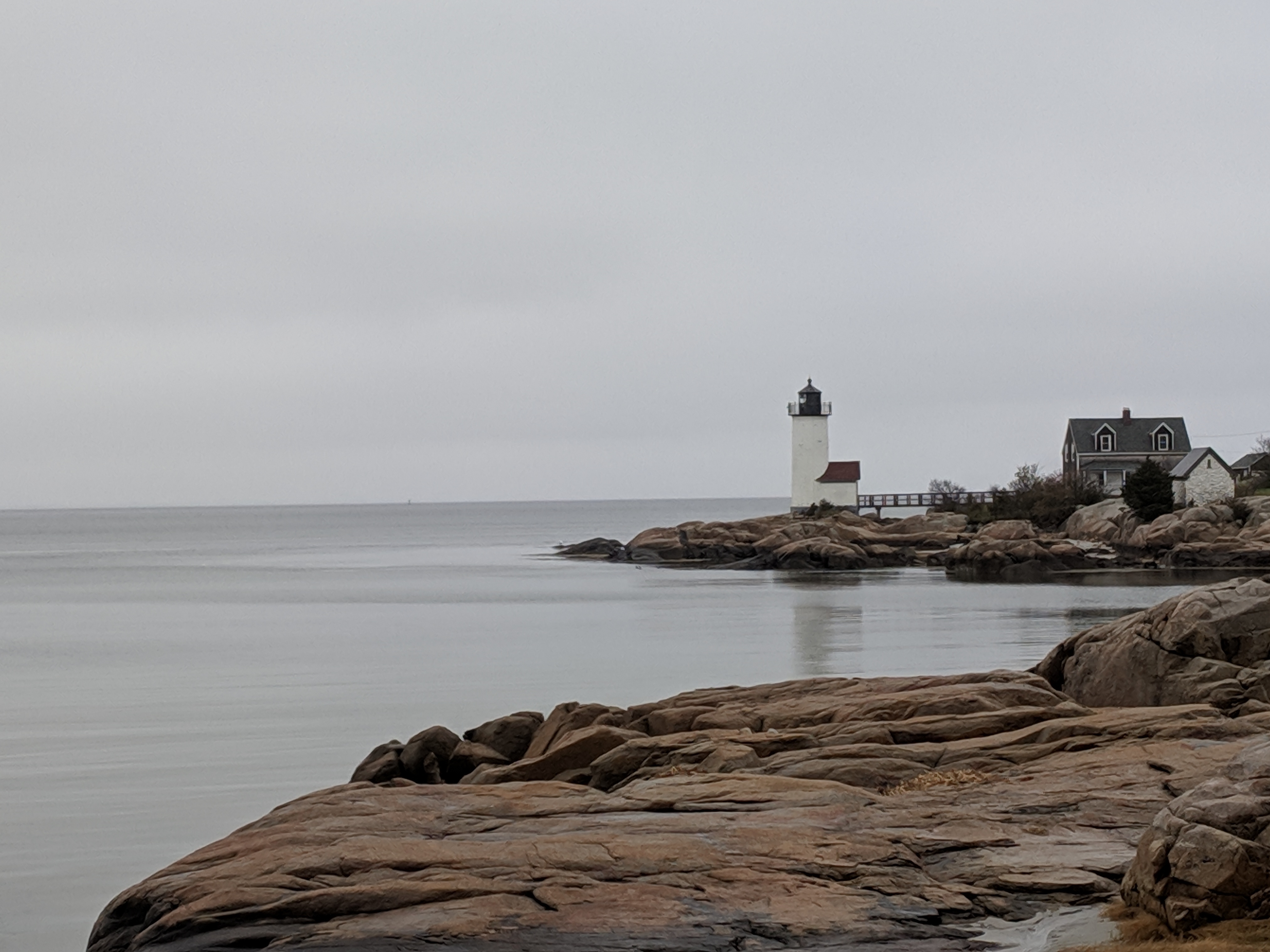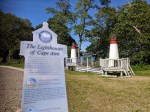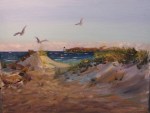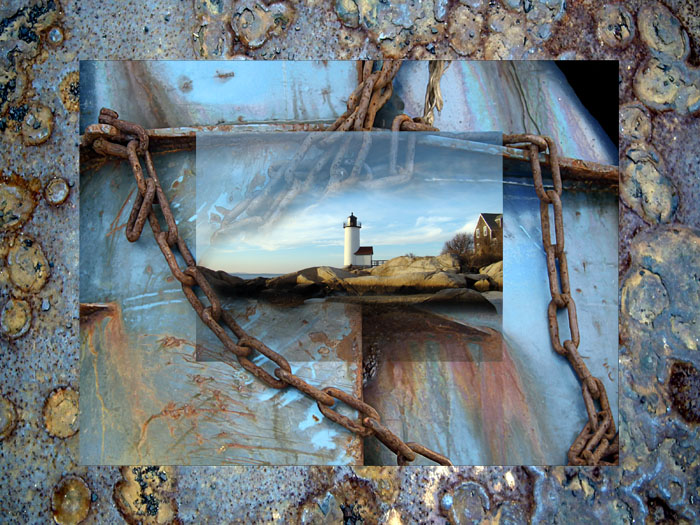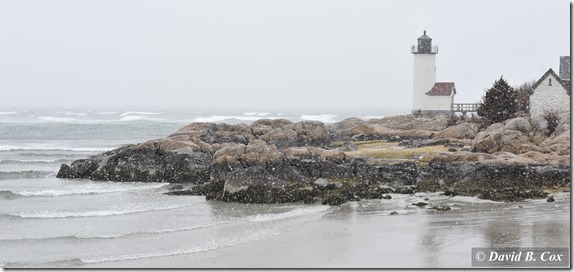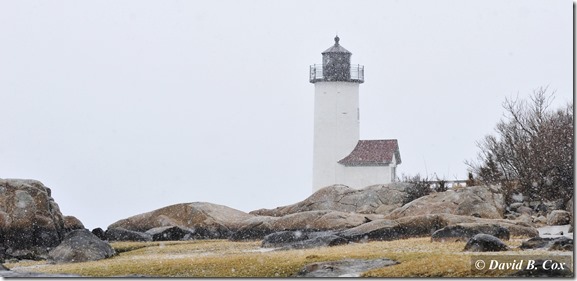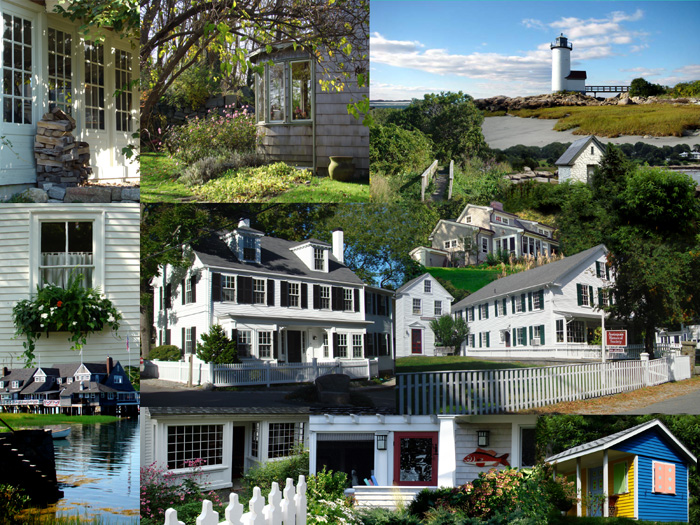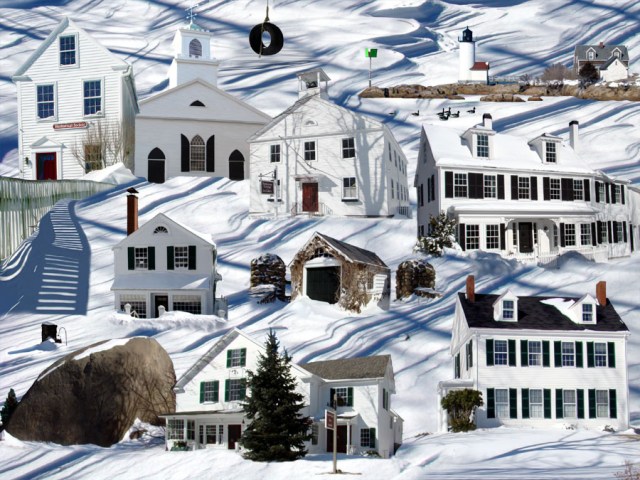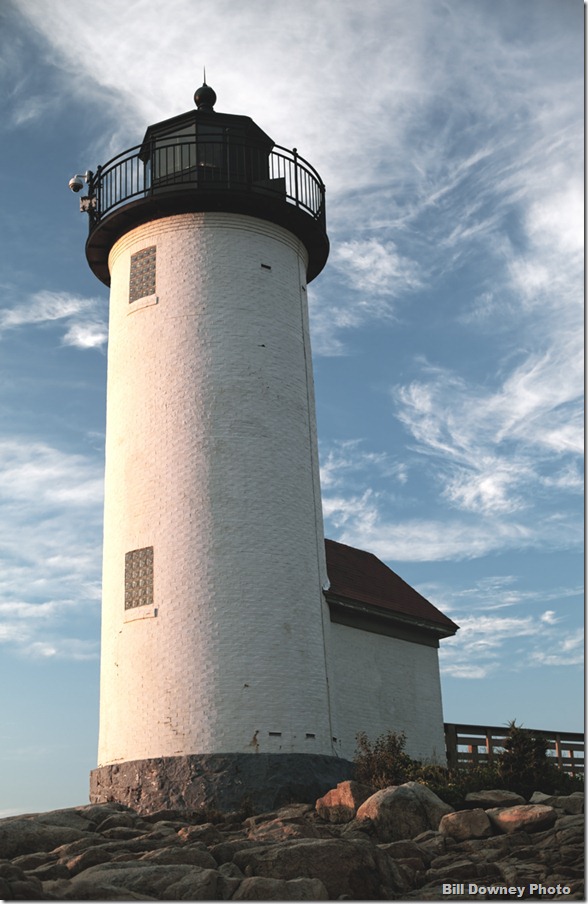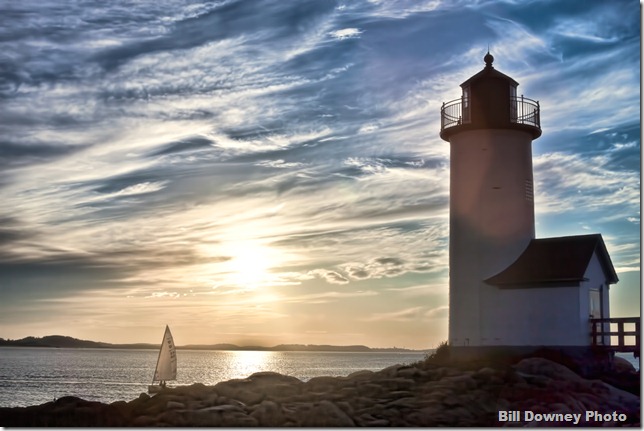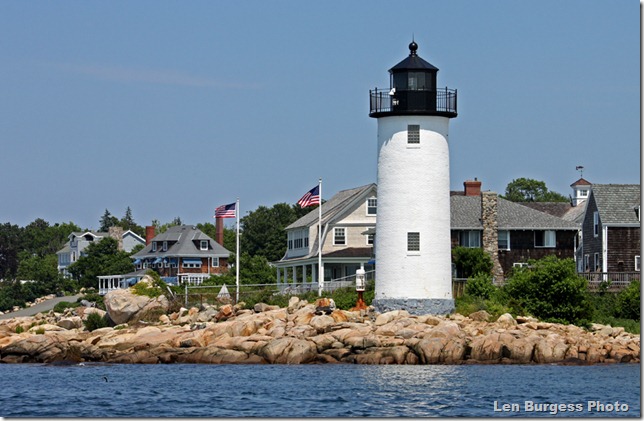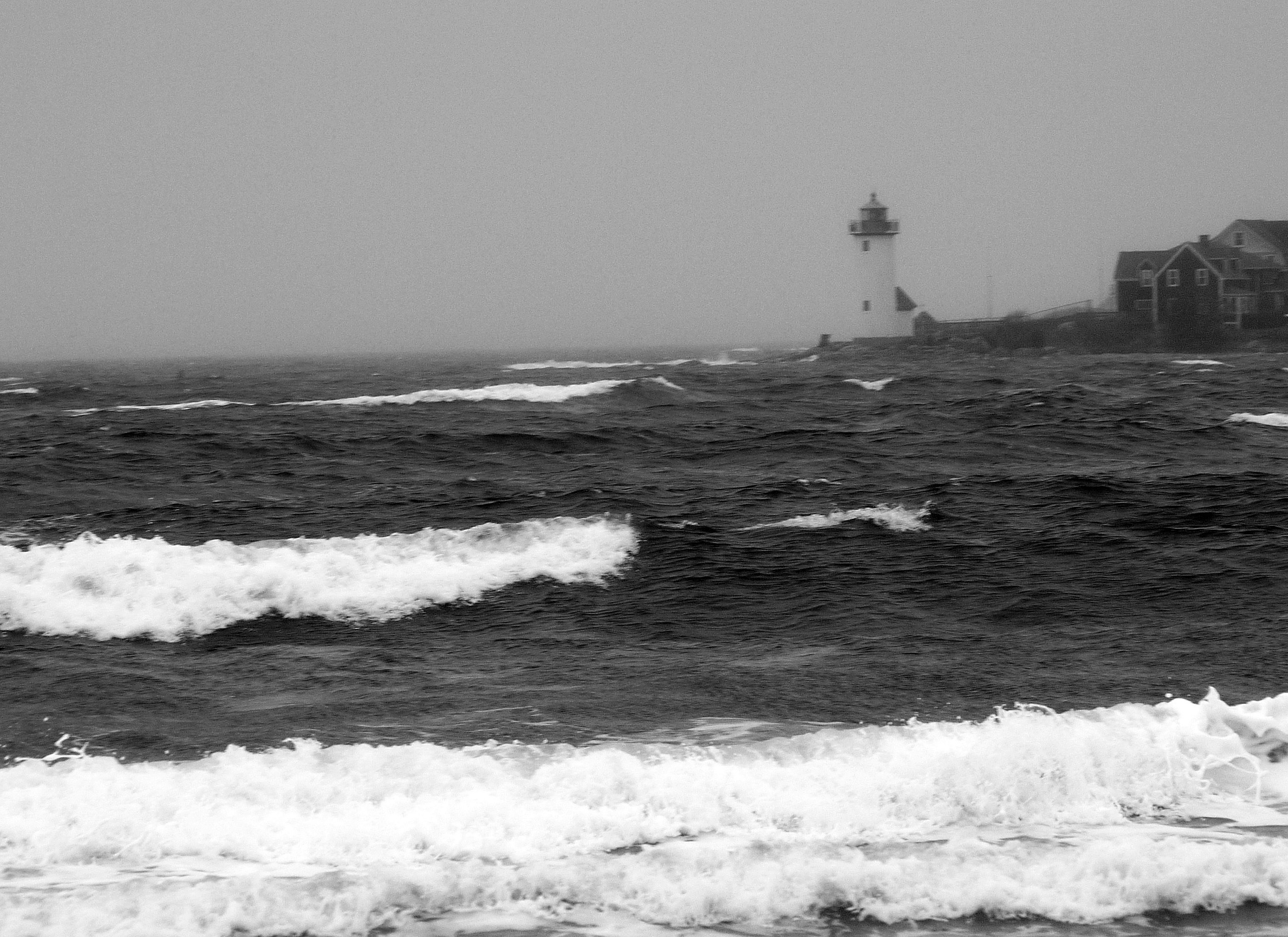“Dog Bar Breakwater A Terror: Captain of the Carrie L. Hix Mistook Gas Buoy for a Light on Shore—Craft Goes to Pieces,” Boston Globe Jan 2, 1900. Image by noted maritime & naval illustrator C. McKnight-Smith
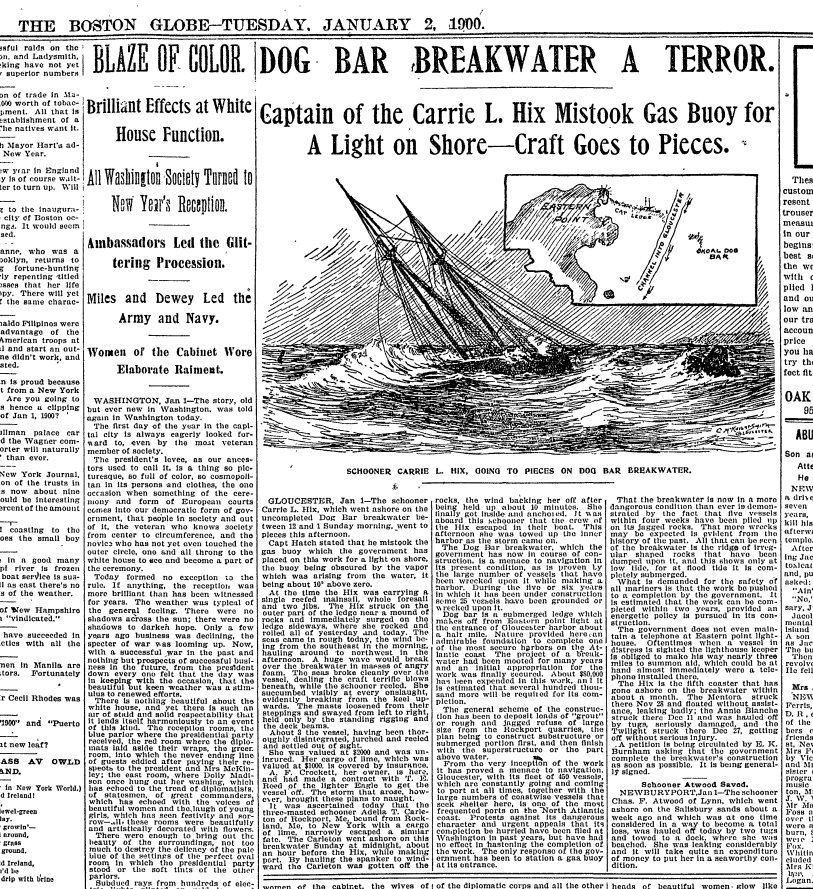

GLOUCESTER, Jan 1— The schooner Carrie L. Hix, which went ashore on the uncompleted Dog Bar breakwater between 12 and 1 Sunday morning, went to pieces this afternoon.
Capt Hatch stated that he mistook the gas buoy which the government has placed on this work for a light on shore, the buoy being obscured by the vapor which was arising from the water, it being about 10° above zero.
At the time the Hix was carrying a single reefed maninsail, whole forsail and two jibs. The Hix struck on the outer part of the ledge near a mound of rocks and immediately surged on the ledge sideways, where she rocked and rolled all of yesterday and today. The seas came in rough today, the wind being from the southeast in the morning, hauling around to northwest in the afternoon. A huge wave would break over the breakwater in masses of angry foam. The seas broke cleanly over the vessel, dealing the craft terrific blows beneath, while the schooner reeled. She succumbed visibly at every onslaught, evidently breaking from the keel upwards. The masts loosened from their steppings and swayed from left to right held only by the standing rigging and the deck boom.
About 3 vessels, having been thoroughly disintegrated, lurched and reeled and settled out of sight.
She was valued at $2000 and was uninsured. Her cargo of lime, which was valued at $1000, is covered by insurance.
A.F. Crockett, her owner, is here, and had made a contract with T.E. Reed of the lighter Eagle to get the vessel off. The storm that arose, however, brought these plans to naught.
It was ascertained today that the three-masted schooner Adelia T. Carleton of Rockport, Me., bound from Rockland, Me., to New York with a cargo of lime, narrowly escaped a similar fate. The Carleton went ashore on this breakwater Sunday at midnight, about an hour before the Hix, while making port. By hauling the spanker to windward the Carleton was gotten off the rocks, the wind backing her off after being held up about 10 minutes. She finally got inside and anchored. It was aboard this schooner that the crew of the Hix escaped in their boat. This afternoon she was towed up the inner harbor as the storm came on.
The Dog Bar breakwater, which the government has now in course of construction, is a menace to navigation in its present condition, as is proven by the large number of vessels that have been wrecked upon it while making a harbor. During the five or six years in which it has been under construction some 25 vessels have been grounded or wrecked upon it.
Dog bar is a submerged ledge which makes off from Eastern point light at the entrance of Gloucester harbor about a half mile. Nature provided here an admirable foundation to complete one of the most secure harbors on the Atlantic coast. The project of a breakwater had been mooted for many years and an initial appropriation for the work was finally secured. About $80,000 has been expended in this work, an it is estimated that several hundred thousand more will be required for its completion.
The general scheme of the construction has been to deposit loads of “grout” of rough and jagged refuse of large size from the Rockport quarries, the plan being to construct substructure or submerged portion first, and then finish with the superstructure or the part above the water.
From the inception of the work it has proved a menace to navigation. Gloucester, with its fleet of 450 vessels, which are constantly going and coming to port at all times, together with the large numbers of coastwise vessels that seek shelter here, is one of the most frequented ports on the North Atlantic coast. Protests against its dangerous character and urgent appeals that its completion be hurried have been filed at Washington in past years, but have had no effect in hastening the completion of the work. The only response of the government has been to station a gas buoy at its entrance.
That the breakwater is now in a more dangerous condition than ever is demonstrated by the fact that five vessels within four weeks have been piled up on its jagged rocks. That more wrecks may be expected is evident from the history of the past. All that can be seen of the breakwater is the ridge of irregular shaped rocks that have been dumped upon it, and this shows only at low tide, for at flood tide it is completely submerged.
What is demanded for the safety of all mariners is that the work be pushed to a completion by the government. It is estimated that the work can be completed within two years, provided an energetic policy is pursued in its construction.
The government does not even maintain a telephone at Eastern point lighthouse. oftentimes when a vessel in distress is sighted the lighthouse keeper is obliged to make his way nearly three miles to summon aid, which could be at hand almost immediately were a telephone installed there.
The Hix is the fifth coaster that has gone ashore on the breakwater within about a month. The Mentora struck there Nov. 28 and floated without assistance, leaking badly; the Annie Blanche struck there Dec. 11 and was hauled off by tugs, seriously damaged, and the Twilight struck there Dec. 27, getting off without serious injury.
A petition is being circulated by E.K. Burnham asking that the government complete the breakwater’s construction as soon as possible. It is being generally signed.
“Dog Bar Breakwater A Terror: Captain of the Carrie L. Hix Mistook Gas Buoy for a Light on Shore—Craft Goes to Pieces,” Boston Globe Jan 2, 1900.
Image by noted maritime & naval illustrator C. McKnight-Smith
Noise complaints plagued another Eastern point Gloucester buoy (‘Mother Ann’s Cow’, aka the groaner), ahead of its 1880s installation and after it was moved a mile further. Many decades later another navigational concern at loggerheads made the news in a separate Gloucester neighborhood. In a 1974 Boston Globe article, Bill Cahill wrote about Gloucester fishermen advocating for policy to protect the foghorn at Annisquam light. Budget cuts that would silence it for good might appease those summer tourists bellowing for an uninterrupted night’s sleep, but “to hell with the tourists. They don’t go fishing,” said Capt. Trupiano. “We need that horn when we’re coming in, especially when our radar breaks down.” Pointedly, the last sentence of this piece delivered a political snafu: “The foghorn has been silenced off and on nights since 1931 when US Rep A Piatt Andrew had it shut off at dusk, fog or not, to allow summer residents peaceful nights.”


